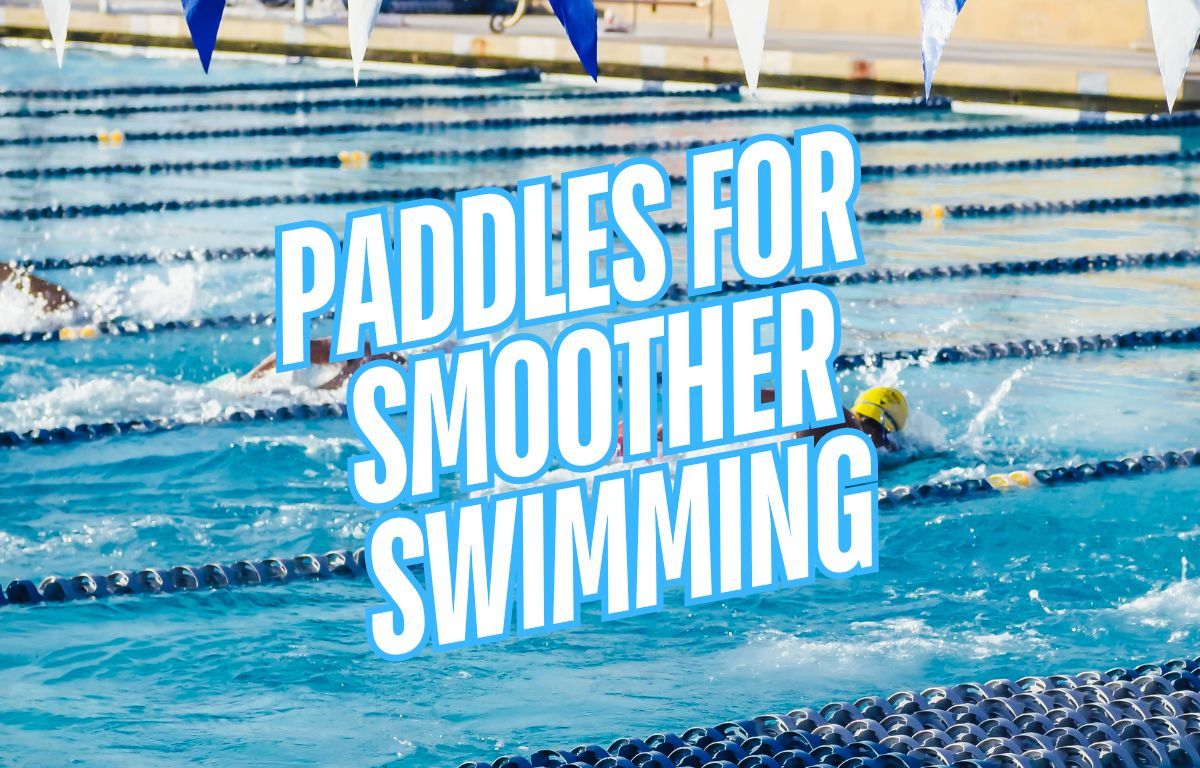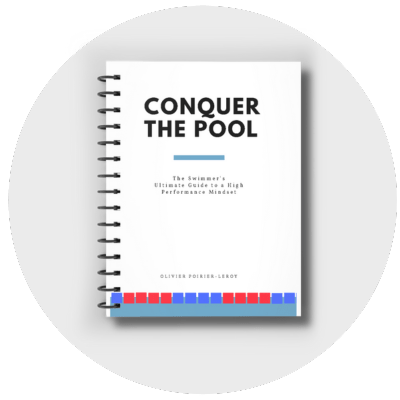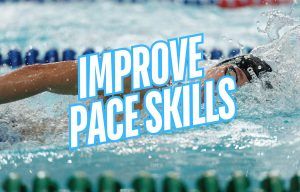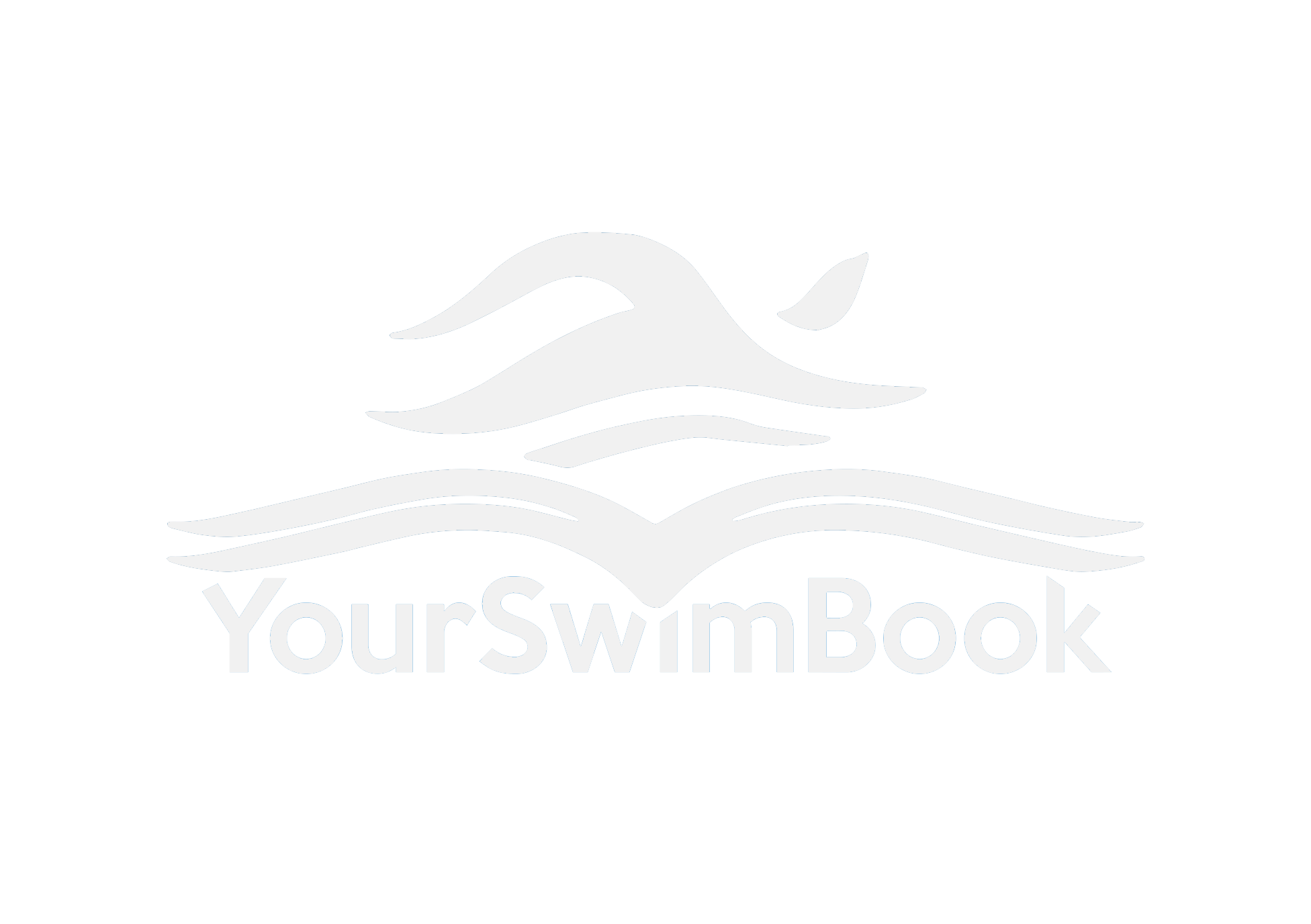Ready to level up your freestyle technique? Here’s a breakdown of how to use paddles to swim smoother freestyle.
Swim paddles are one of the essential types of swim gear for competitive and recreational swimmers looking to crank up performance in the water.
But while paddles tend to be used for power and strength development, building the muscles in the shoulders, chest, back, and arms to develop a more powerful pull, paddles are also an awesome tool for technique.
Namely, swimming freestyle smoother than buttermilk.
And no, I am not talking about finger-tip paddles (which can be used for this tip), but your regular power paddles.
Here’s how.
The Importance of a Clean Hand Entry for Smooth Swimming
Fast, smooth freestylers make it look deceptively easy, but there is a lot that goes into that effortless-looking stroke.
A smooth freestyle includes excellent distance per stroke, a powerful kick, optimal body position, an enhanced feel for the water, and a clean hand entry.
It’s that last point that we will zero in on with this tip.
Swimmers are prone to several technique errors when swimming freestyle, and a sloppy hand entry is near the top of the list.
A study with NCAA swimmers, each with over a decade of competitive swimming experience, had their freestyle strokes analyzed by video and several experienced swim coaches.
Among the technique errors, 45.2% used an incorrect hand entry position, and 38.71% used an incorrect hand entry angle (e.g., thumbs first).
When used for the intent of building a smoother freestyle, swim paddles can help mitigate these technique errors.
How to Use Swim Paddles for a Smoother Freestyle
Here’s how we will deploy a standard power swim paddle (that has wrist and finger straps) to swim more smoothly.
Take off the wrist straps
Paddles typically have wrist and finger straps to keep them in place as we charge up and down the black line.
By removing the wrist strap (the one at the bottom of the paddle), we create an instant feedback loop that lets us know if we are using a proper hand entry or not.
Lead with the fingers
When your hand enters the water at the top of the stroke, lead with your middle finger. It should be the first finger hitting the water. Not your thumb.
This cue is easier with a paddle dangling from the middle finger because all of your attention is focused on sliding the paddle into the water without splashing.
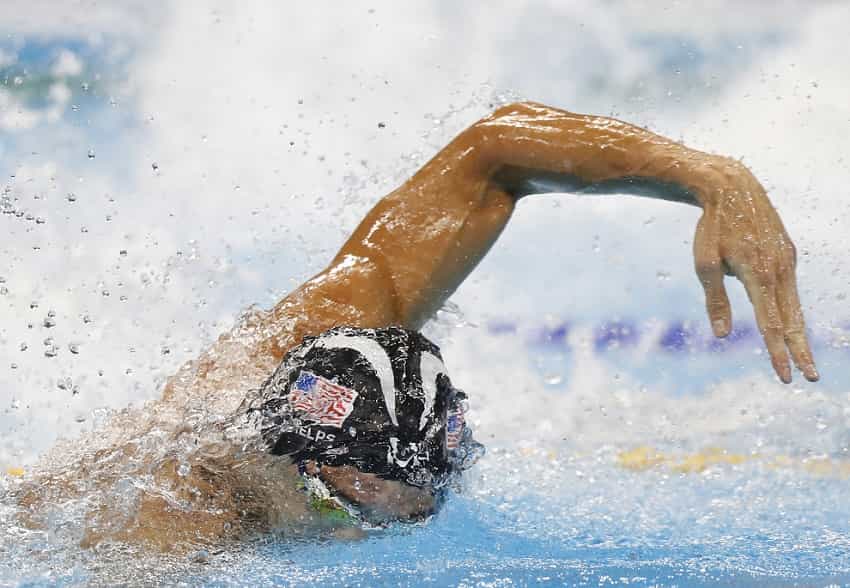
Swim “quietly”
No-splash swimming is one of my favorite drills to help swimmers learn to swim with more control. Instead of slapping at the water, enter it stealthily and quietly.
This promotes a heightened sense of control that naturally results in a much smoother freestyle.
Using paddles for this is perfect, as you can really slice your hand into the water like a ninja, reinforcing the sneaky and smooth hand entry.
Maintain pressure on the paddle
When executing the pull, maintain constant pressure with your palm against the paddle.
This will encourage a “fuller” pull and reduce wasted movement like the hands slipping or the hand tilting and facing outwards.
Start quiet, end fast
Swim slowly and controlled and steadily increase the pace.
Start with 25s and 50s to keep the focus high and the smoothness at a tepid boil, and steadily increase the speed until you feel the “smoothness” feeling not so smooth.
This point of failure is where you will spend lots of time to improve.
Here’s an example set:
20×25 freestyle swim with paddles – 20s rest after each repetition
- Start by doing two reps at 50% effort.
- If you are nailing a clean hand entry and moving smoothly through the water, increase the effort by 10% for the next two reps. And again.
- Increase intensity until the hand entry is not clean. When you fail, go back down to the previous percentage level and close out the set at that speed (e.g. if you fail the clean hand entry at 70%, go back to 60% and finish the set of 25s at that intensity)
- Repeat the set as necessary, aiming to improve the overall number of reps done at 90% effort.
Skill development requires a reasonable rate of progression, so focus on doing it right and steadily increase intensity.

The Best Paddles for a Clean Hand Entry and Smoother Swimming
Most swim paddles can be used for this goal.
Finger-tip paddles like the Arena Elite Fingertip Swim Paddles (Amazon — $18.00) can shine a light on a “finger-first” hand entry that is quiet and smooth.
The FINIS Agility Paddles, a strapless swim paddle that can be used for all four swim strokes, can also provide the feedback of a clean and smooth technique and pulling motion (Amazon — $20).
My go-to paddles for years, and the ones I recommend most are the Speedo Power Plus Paddles.
I’ve logged hundreds of thousands of KMs in the pool with them. The paddles have removable wrist straps for when it’s time to tighten up hand entry and swim more smoothly.
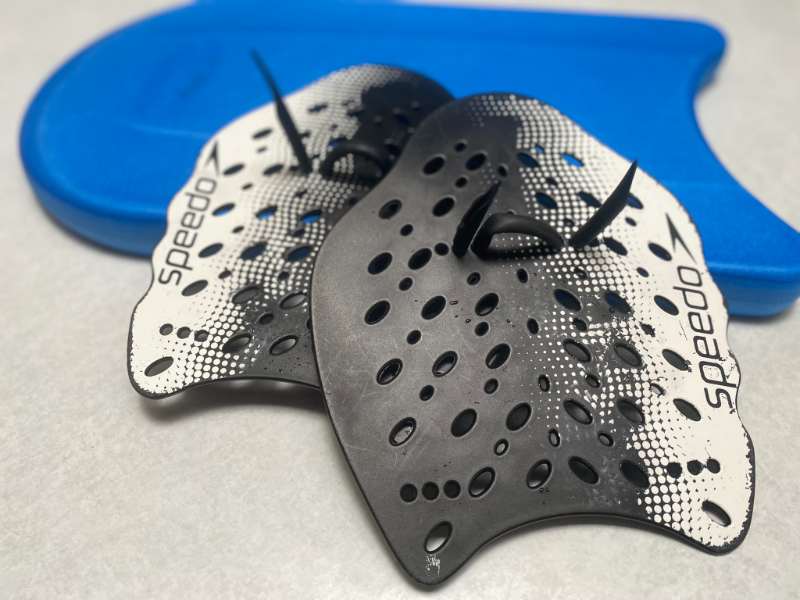
Slide the wrist straps back in when it’s power and strength development time.
Speedo offers the Power Plus Paddles in several different sizes. They also have small vents that allow some water to slide through the paddles (to mimic water going through your fingers when swimming without paddles) and the paddles have an ergonomic design that is comfortable for extended use.
Wrapping Things Up
Improving your freestyle stroke technique can feel a bit mystifying at times, with lots of contradictory advice and bro-science on pool decks and on the interwebs.
While swim paddles are generally used to help you become a stronger swimmer, they can also help you develop a smoother, faster stroke.
That combo—power development and technique improvement—makes paddles one of the best all-around tools for improving swim performance.
Paddle on!
More Freestyle Technique Guides
7 Tips to Improve Freestyle Swimming Technique. Unlock a faster and more efficient freestyle stroke with this list of seven proven tips for killer freestyle technique.
10 Freestyle Drills for Better Technique. Power up your freestyle with ten drills from some of the best coaches and swimmers on the planet.

